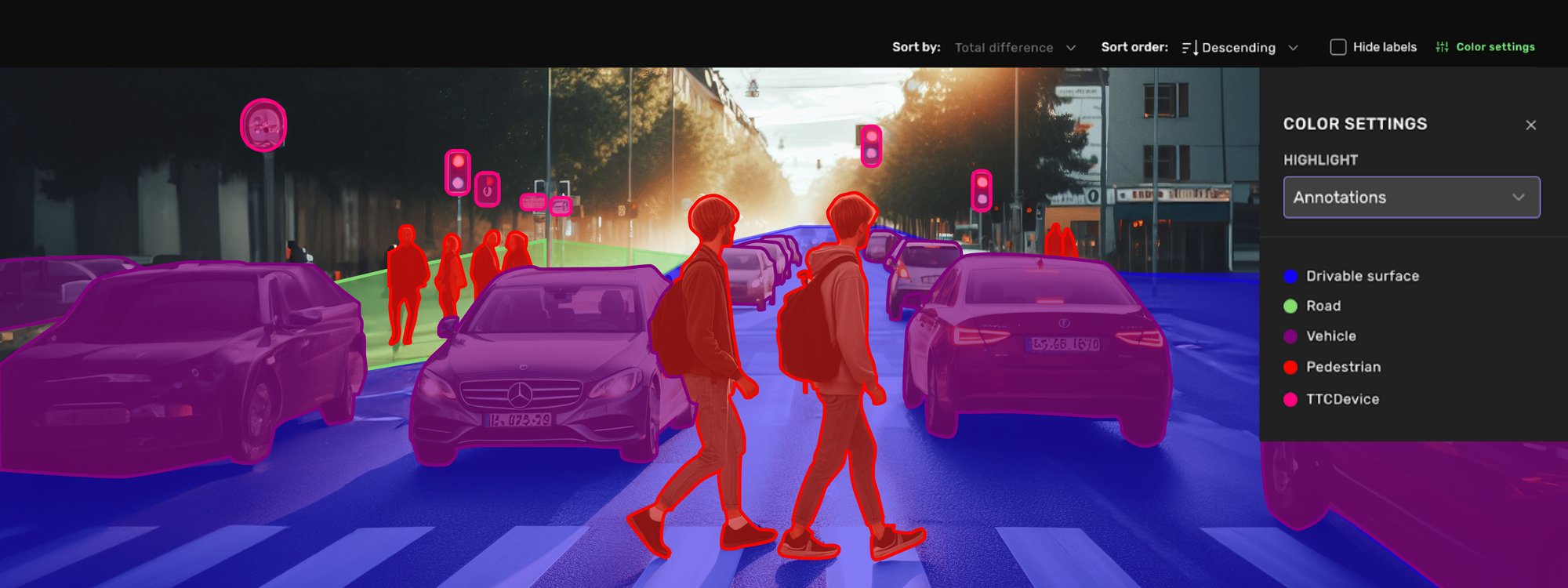Explore your datasets with Semantic Segmentation
Kognic now supports Semantic Segmentation in our data exploration tools, helping you unlock critical insights and patterns in your datasets more efficiently.
What is Semantic Segmentation?
Semantic segmentation assigns class labels to individual pixels in images, enabling autonomous systems to understand and interpret visual data. It's essential for AD/ADAS applications, where machines need to identify and classify objects like roads, pedestrians, and vehicles in real-world driving scenarios.
Why Semantic Segmentation Matters for Your Dataset
Understanding your data is complex. A "road" in one context might look different in another, which is why examining a wide range of annotated data is crucial. Kognic's Explore capability lets you inspect annotations, search, and filter data based on the size of each class segment in each image. This helps you quickly find relevant scenes and analyze segment distributions across your dataset.
Try it out for yourself:
Compare Model Predictions with Annotations
With Kognic's tools, you can compare your model's predictions against human-annotated ground truth. This is particularly valuable for identifying where your model's performance differs from expert annotations, helping you prioritize what to improve.
When examining these differences, three scenarios typically emerge:
- Annotation errors: Manual annotation processes can sometimes result in mistakes that pass through quality assurance.
- Model performance gaps: If the annotation is correct, the discrepancy likely indicates a model performance issue worth investigating.
- Dataset ambiguity: Sometimes it's unclear how the model should behave or how to annotate edge cases. Team discussions and current model predictions can help guide these decisions.
Get the Most Annotated Data for Your Budget
Semantic Segmentation support expands Kognic's capabilities as the most productive annotation platform for sensor-fusion data. By combining efficient human feedback with smart exploration tools, we help you process complex autonomy data faster and more cost-effectively.
If you're looking to better understand your datasets or improve your model development workflow, reach out to learn how Kognic can help.
Share this
Written by

.png?width=2000&name=kognic%20logo-black%20(1).png)
